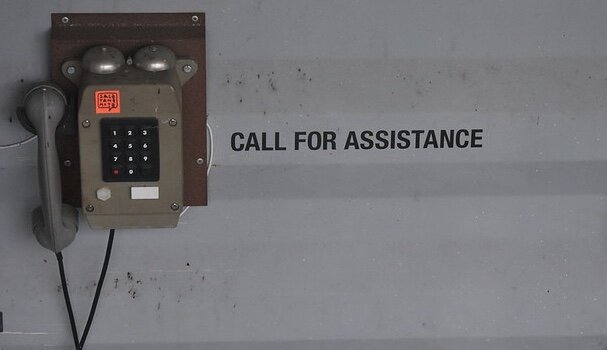What calling the cops (twice!) taught me about organizational change
I recently had two encounters with local law enforcement that got me thinking about systems and organizational change.
I want to start by acknowledging that my experiences with law enforcement are rooted in a position of privilege. I’m a wealthy white man in the U.S. and, in both of these stories, I was the person who called the cops to help.
I have a lot of thoughts about policing-as-a-system, but this won’t be where I share those, in part because I don’t yet feel fully capable of exploring my own blind spots.
But my own recent stories highlight what’s behind the way that law enforcement responds, the way that the systems we’ve invested in show what we prioritize as a society.
The first story, about a month ago, unfolded after I invited a schizophrenic felon into my house late one night.
At that moment, I didn’t know that those labels applied to him; I just knew that he was scared and needed help. I had heard a shout a minute or so before and, when Richard rounded the corner as I walked my dog, I asked him if he needed help.
Richard asked me to call 911: someone who had a beef with him threatened him on the bus and was chasing him, he said. But as his story unfolded, it became more and more clear that his experience diverged from any kind of probable reality. What was clear was that he was afraid.
The Seattle Police Department (SPD) responded quickly, and other facts emerged. Richard had been released that day from jail. He had nowhere to stay. He was a diagnosed schizophrenic with no medication and practically no support network.
The officers walked Richard through the situation. COVID-19 had closed most of Seattle’s already overtaxed homeless shelters. Other than staying on the street, his only option was to voluntarily admit himself to a local hospital where, after a psych workup, he would almost certainly be released back onto the street.
After some back and forth, Richard decided to go to the hospital. An ambulance picked him up; I’m not sure what happened next.
Just this week I called 911 again.
I was driving in the left-most lane of I-5 when a pickup crashed into the median in front of me and came to a stop at a 45-degree angle, blocking the lane. I swerved to avoid him and impacted the concrete median myself. Once I drove the car across the highway to the shoulder, I called 911. The Washington State Patrol and local fire and rescue responded. My kiddos and I were all OK, but pretty shaken up.
SPD’s response was professional and compassionate. So were the State Patrol’s and fire and rescue’s. Though the underlying challenges were different, in both cases law enforcement responded courteously and competently to my unexpected situations. And I’m really grateful.
But there was one difference that struck me. After my car crash, there was a whole system to support what came next. Tow trucks. Insurance. Police reports. Collision shops. My personal support network, too: my co-parent and my girlfriend, both helping in that moment of crisis.
But behind the SPD’s response to Richard, there was no system to back it up. No set of activities to move him forward and bring the issue to a close.
Let’s consider, for a moment, these two systems without making normative judgements about them, without thinking about the desirability of a specific outcome. What we see is that each system represents a commitment to its ultimate result.
That’s true in the world more broadly: no matter what our initial response to an event looks like, the underlying nature of the system tells us what our real commitment to an outcome is.
Let’s say that a leader wants to create a more collaborative company culture. They may bring a bunch of employees together to announce the change (and maybe to run some breakout sessions on working more collaboratively). Even with the buy-in of senior leaders, if there’s no change in the way work gets done, there won’t be a shift in the underlying system, and the organizational change won’t stick.
Successful change efforts, on the other hand, focus not just on the stated goal (“We’ll be more collaborative”) but on the shift required in the way work itself is done. You can’t espouse collaboration as a value, for example, but stick to meetings organized around one-way conversations centered around PowerPoint decks.
The same is true in our personal lives. When I’m working with a coaching client, for example, we often look toward the underlying system that’s supporting (or undermining) their goals, whether that’s to write a book or step into their power as a CEO.
And what about Richard? If the police had a way to connect him with a set of sustained actions — around mental health and housing — he may have a chance of escaping the world he’s in. As it is, I’m afraid that he’ll be stuck in a system that, despite its stated desire to “end homelessness,” has an underlying commitment to business as usual.
Many of us are fortunate to have people and systems in place that support our goals. What are yours?

